 W
WA bogie or railroad truck holds the wheel sets of a rail vehicle.
 W
WThe accident data recorder, in Switzerland also Restwegaufzeichnungsgerät, is an independent electronic device that records before, during, and after a traffic accident relevant data and thus resembles a flight recorder.
 W
WAn alternative fuel vehicle is a motor vehicle that runs on alternative fuel, an energy other than traditional petroleum fuels ; and also refers to any technology of powering an engine that does not involve solely petroleum. Because of a combination of factors, such as environmental concerns, high oil prices and the potential for peak oil, development of cleaner alternative fuels and advanced power systems for vehicles has become a high priority for many governments and vehicle manufacturers around the world.
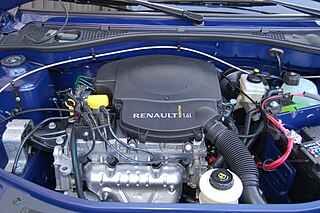 W
WAs of 2013, there were a wide variety of propulsion systems available or potentially available for automobiles and other vehicles. Options included internal combustion engines fueled by petrol, diesel, propane, or natural gas; hybrid vehicles, plug-in hybrids, fuel cell vehicles fueled by hydrogen and all electric cars. Fueled vehicles seem to have the advantage due to the limited range and high cost of batteries. Some options required construction of a network of fueling or charging stations. With no compelling advantage for any particular option car makers pursued parallel development tracks using a variety of options. Reducing the weight of vehicles was one strategy being employed.
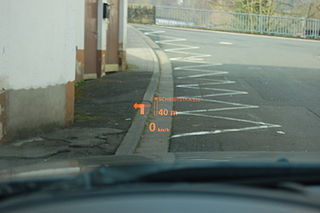 W
WAn automotive head-up display or automotive heads-up display —also known as a auto-HUD— is any transparent display that presents data in the automobile without requiring users to look away from their usual viewpoints. The origin of the name stems from a pilot being able to view information with the head positioned "up" and looking forward, instead of angled down looking at lower instruments. At this time, there are two different approaches to OEM HUDs in automobiles. The first is to treat the back of the windshield in such a way that an image projected onto it will reflect to the driver. The second is to have a small combiner that is separate from the windshield. Combiners can be retracted.
 W
WA bogie is a chassis or framework that carries a wheelset, attached to a vehicle—a modular subassembly of wheels and axles. Bogies take various forms in various modes of transport. A bogie may remain normally attached or be quickly detachable ; it may contain a suspension within it, or be solid and in turn be suspended ; it may be mounted on a swivel, as traditionally on a railway carriage or locomotive, additionally jointed and sprung, or held in place by other means.
 W
WCalAmp is an Irvine, California-based provider of Internet of things (IoT) software applications, cloud services, data intelligence and telematics products and services. The company's technology includes edge computing devices and SaaS-based applications for remotely tracking and managing vehicles, drivers, cargo and other mobile assets. The company also owns the LoJack Stolen Vehicle Recovery System and provides connected car and lot management products.
 W
WCamber thrust and camber force are terms used to describe the force generated perpendicular to the direction of travel of a rolling tire due to its camber angle and finite contact patch. Camber thrust is generated when a point on the outer surface of a leaned and rotating tire, that would normally follow a path that is elliptical when projected onto the ground, is forced to follow a straight path while coming in contact with the ground, due to friction. This deviation towards the direction of the lean causes a deformation in the tire tread and carcass that is transmitted to the vehicle as a force in the direction of the lean.
 W
WCarWings, renamed NissanConnect in 2015, and also branded as Infiniti InTouch is a vehicle telematics service offered by the Nissan Motor Company to drivers in Japan, the United States, Canada, Great Britain, and most other countries where the LEAF is sold. It provides mobile connectivity for on-demand traffic information services and internet provided maps displayed inside select Nissan vehicles. The service began in December 1997, having been installed in the 1997 Nissan Cedric, Nissan Gloria, Nissan President, Nissan Cima and the Nissan Elgrand.
 W
WA chassis is the load-bearing framework of an artificial object, which structurally supports the object in its construction and function. An example of a chassis is a vehicle frame, the underpart of a motor vehicle, on which the body is mounted; if the running gear such as wheels and transmission, and sometimes even the driver's seat, are included, then the assembly is described as a rolling chassis.
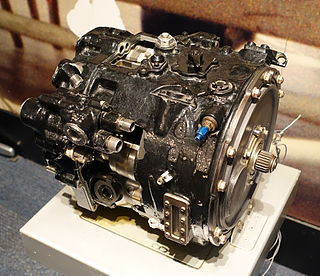 W
WA constant speed drive (CSD) is a type of transmission that takes an input shaft rotating at a wide range of speeds, delivering this power to an output shaft that rotates at a constant speed, despite the varying input. They are used to drive mechanisms, typically electrical generators, that require a constant input speed.
 W
WA de Dion tube is an automobile suspension technology. It is a sophisticated form of non-independent suspension and is a considerable improvement over the swing axle, Hotchkiss drive, or live axle. Because it plays no part in transmitting power to the drive wheels, it is sometimes called a "dead axle".
 W
WA defogger, demister, or defroster is a system to clear condensation and thaw frost from the windshield, backglass, or side windows of a motor vehicle. It was invented by German automobile engineer Heinz Kunert.
 W
WA differential is a gear train with three shafts that has the property that the rotational speed of one shaft is the average of the speeds of the others, or a fixed multiple of that average.
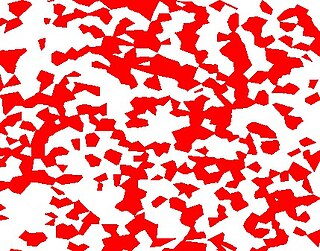 W
WDual-phase steel (DP steel) is a high-strength steel that has a ferritic–martensitic microstructure. DP steels are produced from low or medium carbon steels that are quenched from a temperature above A1 but below A3 determined from continuous cooling transformation diagram. This results in a microstructure consisting of a soft ferrite matrix containing islands of martensite as the secondary phase (martensite increases the tensile strength). Therefore, the overall behaviour of DP steels is governed by the volume fraction, morphology (size, aspect ratio, interconnectivity, etc.), the grain size and the carbon content. For achieving these microstructures, DP steels typically contain 0.06–0.15 wt.% C and 1.5-3% Mn (the former strengthens the martensite, and the latter causes solid solution strengthening in ferrite, while both stabilize the austenite), Cr & Mo (to retard pearlite or bainite formation), Si (to promote ferrite transformation), V and Nb (for precipitation strengthening and microstructure refinement). The desire to produce high strength steels with formability greater than microalloyed steel led the development of DP steels in the 1970s.
 W
WEco-Runner Team Delft is a Delft University of Technology student team, aiming to promote a sustainable future by building the world's most efficient hydrogen-powered car. At the end of the year, the team participates in the Shell Eco-marathon competition in order to assess the efficiency of the vehicle. In the competition there are two vehicle classes: Prototype and UrbanConcept. For years Eco-Runner Team Delft participated in the Shell Eco-marathon Prototype class competition where the goal is to cover a certain distance with the least amount of hydrogen. In the year 2019-2020, the team has decided to compete in a different competition; the Urban Concept class. This challenge offers the team the opportunity to design and build an efficient hydrogen-powered vehicle that is closer in appearance to modern city cars.
 W
WElectronic throttle control (ETC) is an automobile technology which electronically "connects" the accelerator pedal to the throttle, replacing a mechanical linkage. A typical ETC system consists of three major components: (i) an accelerator pedal module, (ii) a throttle valve that can be opened and closed by an electric motor, and (iii) a powertrain or engine control module. The ECM is a type of electronic control unit (ECU), which is an embedded system that employs software to determine the required throttle position by calculations from data measured by other sensors, including the accelerator pedal position sensors, engine speed sensor, vehicle speed sensor, and cruise control switches. The electric motor is then used to open the throttle valve to the desired angle via a closed-loop control algorithm within the ECM.
 W
WAn exhaust heat recovery system turns waste heat energy in exhaust gases into electric energy for batteries or mechanical energy reintroduced on the crankshaft. The technology is of increasing interest as car and heavy-duty vehicle manufacturers continue to increase efficiency, saving fuel and reducing emissions.
 W
WAn automotive head-up display or automotive heads-up display —also known as a auto-HUD— is any transparent display that presents data in the automobile without requiring users to look away from their usual viewpoints. The origin of the name stems from a pilot being able to view information with the head positioned "up" and looking forward, instead of angled down looking at lower instruments. At this time, there are two different approaches to OEM HUDs in automobiles. The first is to treat the back of the windshield in such a way that an image projected onto it will reflect to the driver. The second is to have a small combiner that is separate from the windshield. Combiners can be retracted.
 W
WA fuel tank is a safe container for flammable fluids. Though any storage tank for fuel may be so called, the term is typically applied to part of an engine system in which the fuel is stored and propelled or released into an engine. Fuel tanks range in size and complexity from the small plastic tank of a butane lighter to the multi-chambered cryogenic Space Shuttle external tank.
 W
WG-Book is a telematics subscription service provided by Toyota Motor Corporation in Japan for its Toyota- and Lexus-branded vehicles. G-Book allows users to link with cellphones. personal digital assistants (PDA)'s, personal computers (PC) and G-Book equipped cars across Japan. It is based on the former GAZOO infrastructure of Toyota's membership-based information service and membership system, and it provides interactive information services via vehicle installed touch-screen wireless communication terminals. It also incorporates information from Toyota Mapmaster Inc. which updates digital mapping information and is used by various international companies.
 W
WHalo headlights are automotive front lighting units with luminous rings inside the headlight assembly. Introduced in 2000 by BMW, halos were originally typical of this automaker's cars but soon became a popular customization option to enhance any vehicle's front end appearance.
 W
WA head-up display or heads-up display, also known as a HUD, is any transparent display that presents data without requiring users to look away from their usual viewpoints. The origin of the name stems from a pilot being able to view information with the head positioned "up" and looking forward, instead of angled down looking at lower instruments. A HUD also has the advantage that the pilot's eyes do not need to refocus to view the outside after looking at the optically nearer instruments.
 W
WA hubometer, or hubodometer or simply hubo, is a device mounted on the axle of an automobile or other land vehicle that measures distance traveled.
 W
WInternavi is a vehicle telematics service offered by the Honda Motor Company to drivers in Japan. In the United States, the service is known as HondaLink, or sometimes MyLink. It provides mobile connectivity for on-demand traffic information services and internet provided maps displayed inside selected Honda vehicles. The service began August 1997 and was first offered in the 1998 Honda Accord and the Honda Torneo sold only in Japan starting July 1998. The service received a revision to services offered October 2002, adding traffic information delivery capabilities for subscribers to the Internavi Premium Club, and was optional on most Honda vehicles sold in Japan. VICS was integrated into the service starting September 2003. Membership in the service has steadily grown to exceed 5 million subscribers as of March 2007.
 W
WUVO eServices is a subscription-free OEM infotainment and telematics service offered by Kia Motors America on select vehicles for the United States market. The system allows users to make hands-free calls on their smartphone, stream music, navigate to a POI, and perform vehicle diagnostics with the use of voice commands.
 W
WLaminated glass is a type of safety glass that holds together when shattered. In the event of breaking, it is held in place by an interlayer, typically of polyvinyl butyral (PVB), ethylene-vinyl acetate (EVA), or Thermoplastic Polyurethane (TPU), between its two or more layers of glass. The interlayer keeps the layers of glass bonded even when broken, and its high strength prevents the glass from breaking up into large sharp pieces. This produces a characteristic "spider web" cracking pattern when the impact is not enough to completely pierce the glass. In the case of the EVA, the thermoset EVA, offers a complete bounding (cross-linking) with the material whether it is glass, polycarbonate, PET, or other types of products. TPU is the best choice for Bullet-Resistant Glass (BRG) and for so called E-Glass.
 W
WLink Motion is an automotive software and hardware company developing embedded automotive systems that have been used in the Lamborghini Huracán. Their main product is the Motion T carputer which can implement a connected vehicle gateway as a separate unit or as a part of the cockpit solution (eCockpit). The Motion T carputer runs on NXP's i.MX8 multi-OS platform, supports four in-car HD displays and hosts connectivity features on Microsoft’s connected vehicle platform, a set of services built on the Microsoft Azure cloud, such as over-the-air software and firmware updates, telemetry and diagnostics data and secure remote access.
 W
WThe Lombard Steam Log Hauler, patented 21 May 1901, was the first successful commercial application of a continuous track for vehicle propulsion. The concept was later used for military tanks during World War I and for agricultural tractors and construction equipment following the war.
 W
WThe Super Shift transmission, also marketed as Twin-Stick, was a manual transaxle transmission developed by Mitsubishi Motors in the late 1970s and used in a limited number of the company's road cars, most of which were manufactured in the 1980s. It was unusual in that it had 8 forward speeds in a 4x2 arrangement. It essentially installed a "married" overdrive unit to its manual transmission, something rare in a production vehicle of this type.
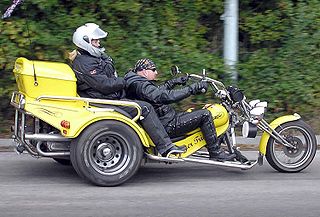 W
WA motorized tricycle, motor trike, or three-wheeled motorcycle is a three-wheeled vehicle based on the same technology as a bicycle or motorcycle, and powered by an electric motor, motorcycle, scooter or car engine.
 W
WMoving floor is a hydraulically-driven moving-floor conveyance system for moving bulk material or palletized product, which can be used in a warehouse, loading dock or semi-trailer. It automates and facilitates loading and unloading of palletized goods by eliminating the need for a forklift to enter the trailer. In a truck-based application, the system can quickly unload loose material without having to tip the trailer or tilt the floor as with other dumping systems. In a bulk material application such as a waste facility, these systems can reduce double handling by allowing any vehicle to deliver material to the conveying floor and move heavy bulk materials to subsequent stages of a process. For bagged waste, the system can also be combined with bag openers.
 W
WAn odometer or odograph is an instrument used for measuring the distance traveled by a vehicle, such as a bicycle or car. The device may be electronic, mechanical, or a combination of the two (electromechanical). The noun derives from ancient Greek ὁδόμετρον, hodómetron, from ὁδός, hodós and μέτρον, métron ("measure"). Early forms of the odometer existed in the ancient Greco-Roman world as well as in ancient China. In countries using Imperial units or US customary units it is sometimes called a mileometer or milometer, the former name especially being prevalent in the United Kingdom and among members of the Commonwealth.
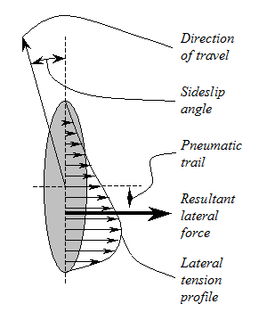 W
WPneumatic trail or trail of the tire is a trail-like effect generated by compliant tires rolling on a hard surface and subject to side loads, as in a turn. More technically, it is the distance that the resultant force of side-slip occurs behind the geometric center of the contact patch.
 W
WPropulsion is the action or process of pushing or pulling to drive an object forward. The term is derived from two Latin words: pro, meaning before or forward; and pellere, meaning to drive. A propulsion system consists of a source of mechanical power, and a propulsor.
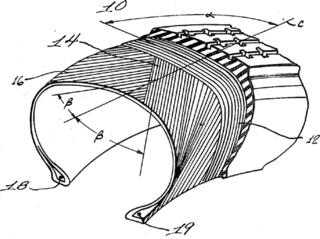 W
WA radial tire is a particular design of vehicular tire. In this design, the cord plies are arranged at 90 degrees to the direction of travel, or radially. Radial tire construction climbed to 100% market share in North America following Consumer Reports finding the superiority of the radial design in 1968, and were standard by 1976.
 W
WA range extender is a fuel-based auxiliary power unit (APU) that extends the range of a battery electric vehicle by driving an electric generator that charges the vehicle's battery. This arrangement is known as a series hybrid drivetrain. The most commonly used range extenders are internal combustion engines, but fuel-cells or other engine types can be used.
 W
WRedtail Telematics is a provider of GPS enabled fleet tracking products. The company is based in North America with headquarters in the United Kingdom. Redtail's products use a technology solution known as VAM which includes features such asGPS jamming/tamper protection alerts Motion sensors Vehicle status engine detection Onboard diagnostics.
 W
WA rolling chassis is the chassis without bodywork of a motor vehicle, assembled with its final powertrain, and able to move under its own power.
 W
WA run-flat tire is a pneumatic vehicle tire that is designed to resist the effects of deflation when punctured, and to allow the vehicle to continue to be driven at reduced speeds - under 56 mph (90 km/h) - and for limited distances - usually 10 mi (16 km) to 50 mi (80 km), depending on the type of tire.
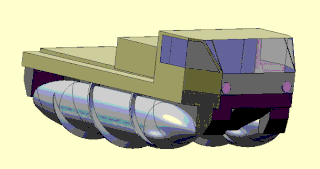 W
WA screw-propelled vehicle is a land or amphibious vehicle designed to cope with difficult snow and ice or mud and swamp. Such vehicles are distinguished by being moved by the rotation of one or more auger-like cylinders fitted with a helical flange that engages with the medium through or over which the vehicle is moving. Modern vehicles called Amphirols and other similar vehicles have specialised uses.
 W
WA belt trailer or self unloading belt trailer is a semi-trailer that uses either a chain and flap assembly or a continuous belt that runs lengthwise on the bottom of the trailer. The belt is bolted to bars that in turn bolt to a chain that runs the length of the trailer. This belt is usually composed of rubber that allows the belt to grip the product and various widths are available depending on manufacturer generally ranging from 25 inches to 61 inches wide. A planetary, which is powered by a PTO pump, electric, or gas motor, cycles the belt.
 W
WThe south-pointing chariot was an ancient Chinese two-wheeled vehicle that carried a movable pointer to indicate the south, no matter how the chariot turned. Usually, the pointer took the form of a doll or figure with an outstretched arm. The chariot was supposedly used as a compass for navigation and may also have had other purposes.
 W
WA speedometer or speed meter is a gauge that measures and displays the instantaneous speed of a vehicle. Now universally fitted to motor vehicles, they started to be available as options in the early 20th century, and as standard equipment from about 1910 onwards. Speedometers for other vehicles have specific names and use other means of sensing speed. For a boat, this is a pit log. For an aircraft, this is an airspeed indicator.
 W
WA steering damper, or steering stabiliser is a damping device designed to inhibit an undesirable, uncontrolled movement or oscillation of a vehicle steering mechanism, a phenomenon known in motorcycling as wobble.
 W
WSuspension is the system of tires, tire air, springs, shock absorbers and linkages that connects a vehicle to its wheels and allows relative motion between the two. Suspension systems must support both road holding/handling and ride quality, which are at odds with each other. The tuning of suspensions involves finding the right compromise. It is important for the suspension to keep the road wheel in contact with the road surface as much as possible, because all the road or ground forces acting on the vehicle do so through the contact patches of the tires. The suspension also protects the vehicle itself and any cargo or luggage from damage and wear. The design of front and rear suspension of a car may be different.
 W
WTelematics is an interdisciplinary field that encompasses telecommunications, vehicular technologies, electrical engineering, and computer science. Telematics can involve any of the following:
 W
WTire balance, also called tire unbalance or tire imbalance, describes the distribution of mass within an automobile tire or the entire wheel on which it is mounted.
 W
WTire Manipulator is a piece of equipment, or tool that is used for handling large OTR tires, or large wheels. Other names that are used for tire manipulator are tire handler or tire clamp. Tire manipulator is generally manufactured as an attachment which is a part of another vehicle. For example, a forklift, loader or another truck.
 W
WA transfer case is a part of the drivetrain of four-wheel-drive, all-wheel-drive, and other multiple powered axle vehicles. The transfer case transfers power from the transmission to the front and rear axles by means of drive shafts. It also synchronizes the difference between the rotation of the front and rear wheels, and may contain one or more sets of low range gears for off-road use.
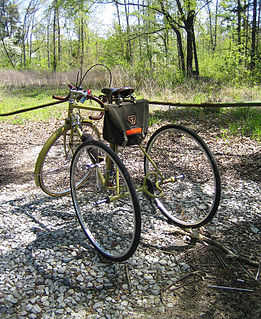 W
WA tricycle, often abbreviated to trike, is a human-powered three-wheeled vehicle.
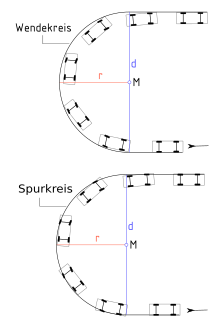 W
WTurning circle refers to a theoretical minimal circle in which a vehicle or boat can be turned around. The tightest turning circle possible for a vehicle is the one where the vehicle does not move either forwards or backwards while turning and effectively simply rotates on its own axis. Taking a rectangular vehicle capable of doing this, its turning circle would in fact be equal to the diagonal length of the vehicle. Most obviously boats can be turned in this way.
 W
WThe turning radius or turning circle of a vehicle is the radius of the smallest circular turn that the vehicle is capable of making.
 W
WA variable gauge system allows railway vehicles in a train to travel across a break of gauge caused by two railway networks with differing track gauges.
 W
WVehicle-to-everything (V2X) is communication between a vehicle and any entity that may affect, or may be affected by, the vehicle. It is a vehicular communication system that incorporates other more specific types of communication as V2I (vehicle-to-infrastructure), V2N (vehicle-to-network), V2V (vehicle-to-vehicle), V2P (vehicle-to-pedestrian), V2D (vehicle-to-device) and V2G (vehicle-to-grid).
 W
WThe wheel and axle is a machine consisting of a wheel attached to a smaller axle so that these two parts rotate together in which a force is transferred from one to the other. The wheel and axle can be viewed as a version of the lever, with a drive force applied tangentially to the perimeter of the wheel and a load force applied to the axle, respectively, that are balanced around the hinge which is the fulcrum.
 W
WIn both road and rail vehicles, the wheelbase is the horizontal distance between the centers of the front and rear wheels. For road vehicles with more than two axles, the wheelbase is the distance between the steering (front) axle and the centerpoint of the driving axle group. In the case of a tri-axle truck, the wheelbase would be the distance between the steering axle and a point midway between the two rear axles.